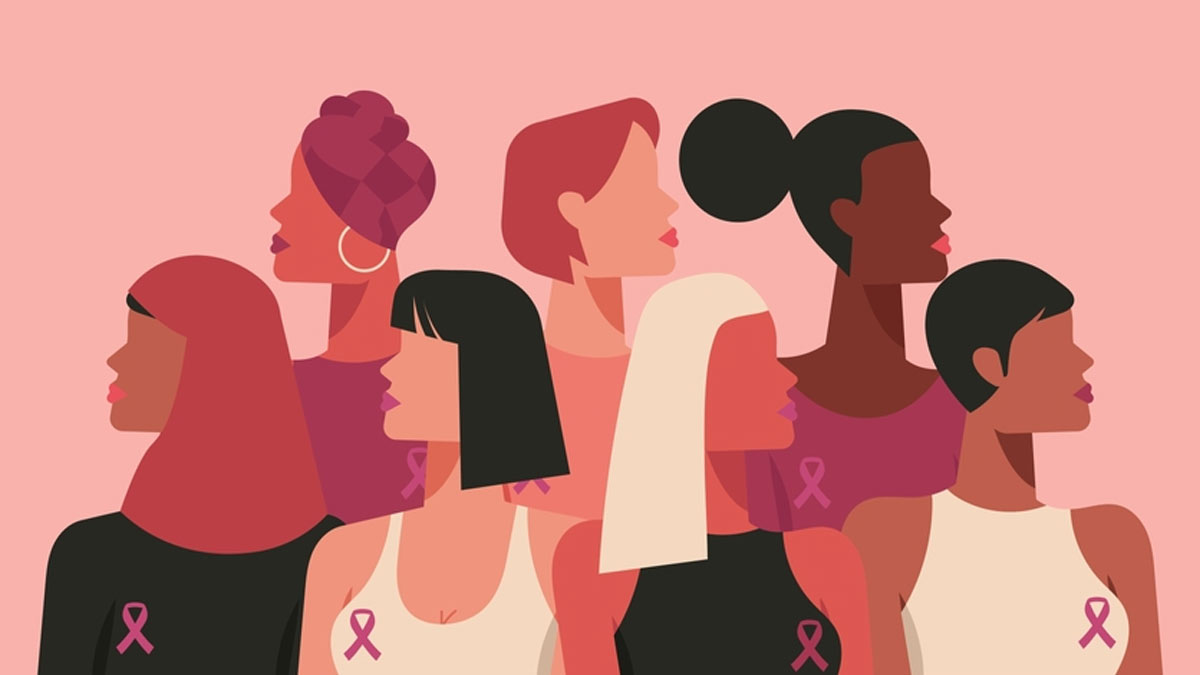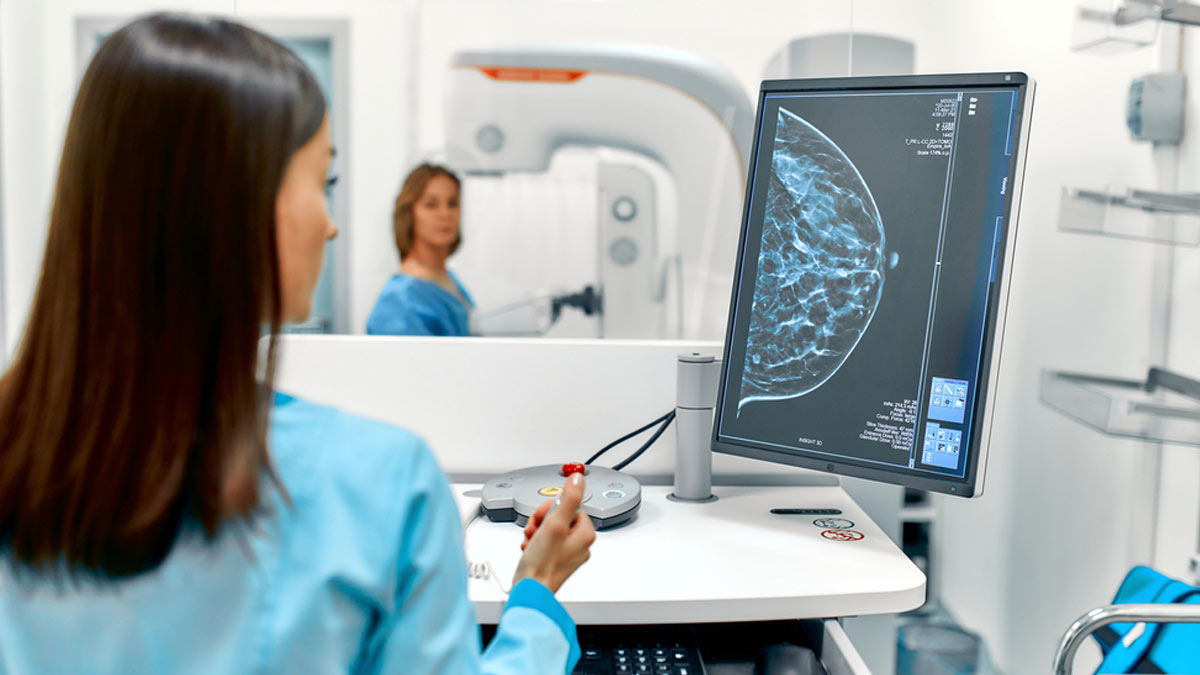
Breast Cancer Awareness Month: Survivors Share Their Stories
Breast cancer is not transmissible unlike some cancers such as cervical cancer which can be communicable if caused by HPV. Certain factors such as increasing age, obesity, alcohol use, family history, exposure to radiation, reproductive history, and tobacco use can increase the risk of breast cancer.
According to the World Health Organization, in 2020 there were 2.3 million women diagnosed with breast cancer with 685,000 deaths worldwide. At the end of 2020, there were 7.8 million women who were alive after being diagnosed with breast cancer in the past five years, making it the most prevalent form of cancer. Here are three women who narrate their personal ordeals with the cancer:
Veeta Amardeep

On an early morning, Veeta Amardeep was rubbing her neck and experienced a knot in her left breast. Unaware of its cause, Amardeep asked her relatives for help who suggested she go for a mammogram immediately.
The results came back showing BI-RADS 5 on assessment. “I thought it was a benign tumour and took alternative therapy for it for three months thinking it would go away,” said Amardeep.
However, whenever she lied down there was intense pain causing sleeplessness. She decided to show it again.This time the doctor scolded her for being so laid back about it as the BI-RADS 5 assessment proved that the malignancy was greater than or equal to 95%.
She had not told her immediate family about this and was doing all the tests alone. But after understanding the severity of the illness, she informed them. Showing grit and strength, Amardeep did not let her family members see the cancer as a sign of weakness.
1
2
3
4
The mammogram was not enough to suggest the rate of malignancy and Amardeep took a fine needle aspiration test (FNA), where a small amount of breast tissue was removed from the suspected area with a needle and checked for cancer cells. The accuracy rate is more, which helped identify the malignant tumour in the breast.
Subsequently, the surgery to remove the breast was after a week. The doctors told her to start her rounds of chemotherapy and radiation, but before that she needed to take 17 doses of herceptin, a monoclonal antibody injection for women who have not reached menopausal age yet. There is a high chance of recurrence of cancer if the woman is not menopausal.
The injection was expensive and came at a hefty price tag of ₹1 lakh. Coming from a middle-class family, Amardeep could not afford the injections, but the love she had poured to extended family was reciprocated when her cousins would leave packets of money under her pillowcase. When her insurance was exhausted, the money left by her relatives helped her treatment.
She was lucky to be diagnosed when her cancer was at Stage 3b as Stage 4 would mean there could be no treatment. The six rounds of chemotherapy and 30 radiation rounds that took place meant a lot of weakness and hair loss. On seeing her going bald, her children told her to wear a wig, but Amardeep embraced her baldness and refused to wear a wig.
Twenty-one days after the completion of her treatment, Amardeep was put on hormonal therapy. She has been taking oral medications for the past seven years.
Her whole body was shaken up after chemotherapy as the treatment was intravenous–shrinkage of nerves meant that a shoulder port had to be inserted for the transfer of liquids from the bottles.
Her haemoglobin levels dropped as the blood was unable to reach the tips of hands and feet after shrinkage. And the hormonal medicines had side-effects which affected her bones and muscles.
Earlier she would neglect her health, but later she realised how important it was to take care of herself. She could not consume protein-rich foods as it caused nausea and vomiting, so she ensured to drink protein powder. She also included coconut water, green tea, and citrus fruits to her diet.
Today, she goes to breast cancer awareness programs and motivates other survivors to not lose faith, and take extra efforts to maintain their health. Amardeep has not lost her zeal, and believes that every single moment of life is precious and should be enjoyed. She can be seen driving herself around, attending parties and get-togethers, encouraging women to let their feelings out and never suppress any emotion, whether good or bad.
Don't miss:Breast Cancer Awareness Month: 10 Myths You Should Stop Believing Right Away
Paromita Mukherjee
Paromita Mukherjee’s whole world came crumbling down as she experienced a lump on her right breast in March this year. She hurriedly called her daughter who was working from home to confirm her apprehension.
Mukherjee’s gynaecologist suggested she get a mammogram done, which showed malignancy. At Stage 2 of breast cancer, her tumour was sized at 2 cm, which is relatively smaller.
Her family was shattered to hear the news. “Breast cancer was no fault of my own, but my family was emotionally dependent on me and going through the treatment with ease was the best way to make them feel confident,” said Mukherjee.
Additionally, she had to get a few more tests such as a CT scan and an ultrasonography test, after which the doctors operated on the tumour. They told her the protocols—it would take eight rounds of chemo and more than 20 rounds of radiation.
Her tumours were ER/PR positive (oestrogen and progesterone receptors), so she was given hormone blockers as the return of the disease could be prevented by blocking the effects of oestrogen.
She got a lumpectomy, instead of a mastectomy as her cancer was sentinel lymph node positive (spread from the primary tumour to secondary locations).
The drug used for chemotherapy was Doxorubicin–commonly called the Red Devil for its distinctive hue and fearsome toxicity. The first four doses of chemotherapy left extreme levels of nausea in Mukherjee’s body. “I suffered a lot, but was determined to not let it hamper my daily activities. I exercised, partied, and spent quality time with my family and friends,” she said.
Clumps of hair began to fall after the first round itself, which was a painful sight for Mukherjee, soon after that she went to the salon to get her hair shaved. “Hair is not only associated with beauty, but it is a part of your identity since childhood. That day will prick me for the rest of my life,” she said. It was also the last day she cried. “I was determined to not go into depression and kept my usual nature.”
None of her hair follicles grow hair anymore, including her eyebrows and eyelashes.
She thought she would flaunt her shaved head, but passersby ogled and stared at her like she was an anomaly. “A couple at a cafe asked me if I donated my hair. I decided to wear a wig at parties and functions after that,” she said.
For the next four cycles, Paclitaxel injection was used, which reduced the nausea but caused immense fatigue, neuropathies, and joint pains. She is awaiting her radiation rounds to start.
She advises cancer patients to not lose hope as it is no longer untreatable, and modern treatments and technologies have made the prognosis impeccable. “All age groups should self-check their breasts and get mammograms done on a regular basis as early detection has higher chances of curing cancer,” she added. “There will be many tears and hurdles, but there is a bright sunny day ahead of you.”
Don't miss:Breast Cancer Awareness Month: Steps To Do Self Examination
Asha Narang
At the age of 55, Asha Narang, a business woman was diagnosed with breast cancer. After bathing one morning, she felt a painless lump and knot on her breast. She got further tests done and the doctors suggested she get surgery. The cancerous tissue was removed from the breast.
The future course of action was now dependent on the advice of the doctors. “We took multiple opinions and the breast biopsy suggested that no chemotherapy was required as it was Stage 1 of cancer,” she said.
However, one of the doctors said that there was an immense risk to this and chemo was the best option forward. “She had no amount of sensitivity with zero scope of psychological counselling present. Her diagnosis increased my stress and was even more strenuous than my diagnosis. She said that my treatment was done wrongly,” said Narang.
Another doctor’s opinion helped ease the distress as he built Narang’s self-confidence and assured her that nothing was wrong. One year later, she got a PET scan (imaging testing that reveals the biochemical functions of tissues and organs) that turned out to be normal.
Narang resumed her business and lives a healthy life today. Her smile is infectious and does not let viewers know about the struggles she went through.
Also Watch:
1
2
3
4